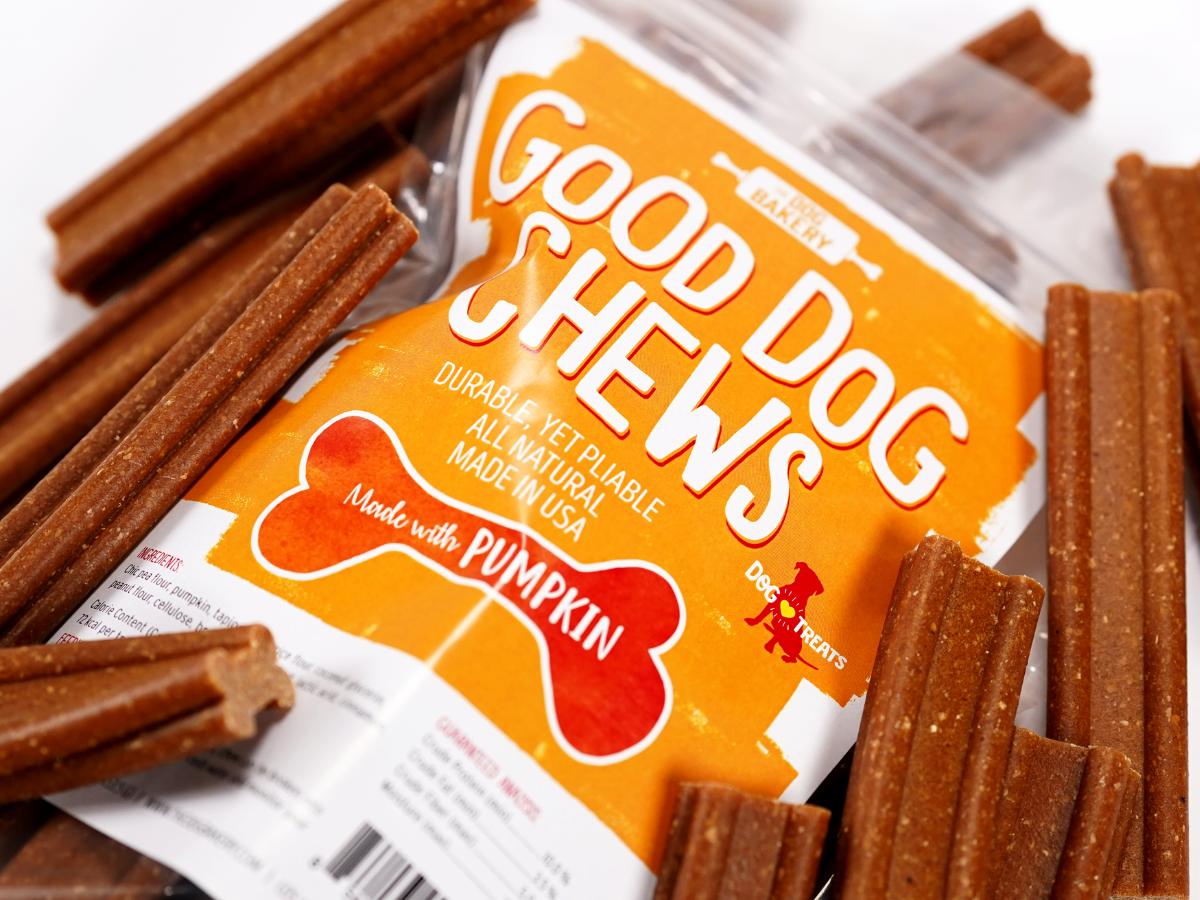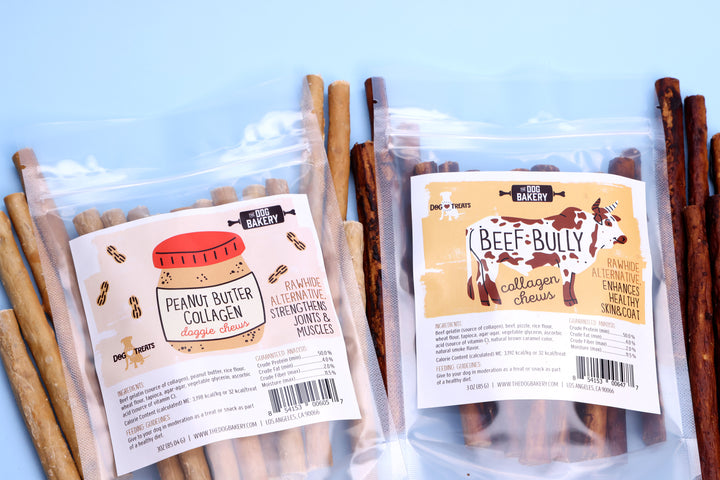Ultra-Rare Blue Merle Pomeranians Sell for Over $4,000. Are They Worth The Price?
In the lucrative market of “exotic” dog colors, the blue merle Pomeranian emerges as one of the most coveted color variations of this breed, fetching prices in the thousands. Officially recognized by the American Kennel Club, this distinctive color variation has become a prized choice among both enthusiastic pet owners and professional dog handlers.
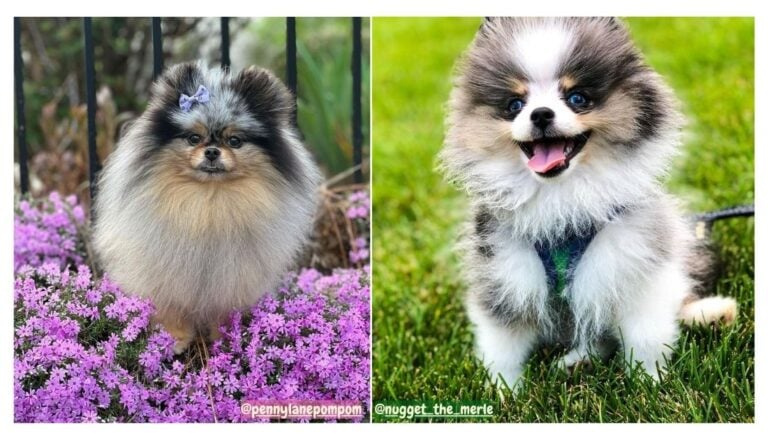
Gorgeous and unique, no two blue merle Poms are quite alike, which is part of the appeal—who wouldn’t want a one-of-a-kind dog that turns heads everywhere you take it?
Of course, there’s a lot more to the blue merle Pomeranian than stunning good looks, and some people don’t even believe these dogs should be bred. Keep reading to get into double-merle-dog controversies, meet a handful of blue merle Pomeranians, and learn more about what it takes to own one of these dogs.
Meet 5 Blue Merle Pomeranians from Instagram
We won’t make you wait another second to see some adorable blue merle Pomeranians for yourself! Meet 5 blue merle Poms from around the world who have way more Instagram followers than most people.
1. Kai
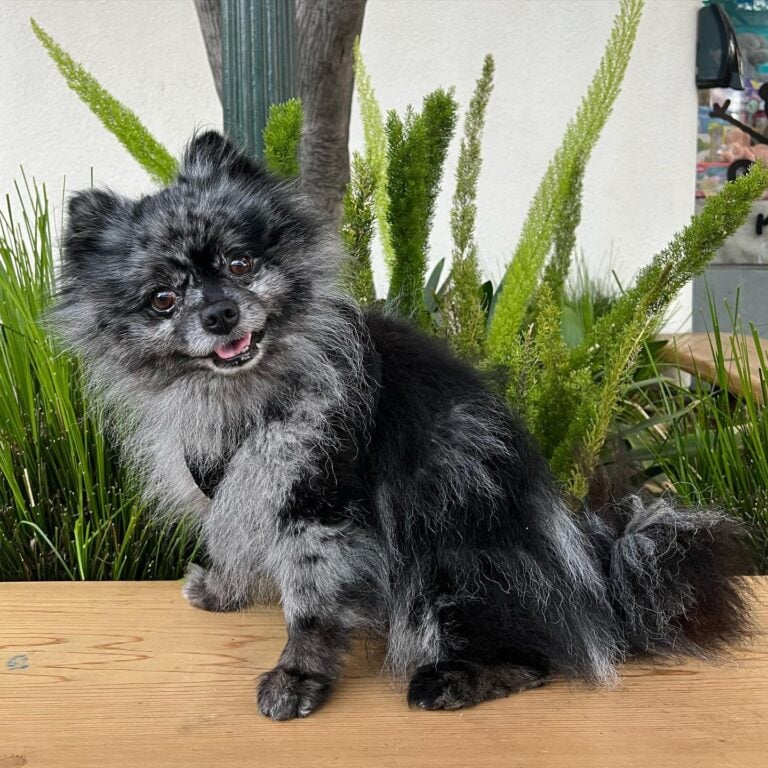
Did you know Pomeranians can smile? Kai here is a super cute blue merle Pomeranian whose little face is so cute we almost can’t stand it! Kai is playful and social and goes everywhere he can with his humans.
2. Miso

Miso is a one-year-old blue merle Pom with one brown eye and one blue eye! This is a common trait among merle dogs since the merle gene can affect pigment everywhere, not just the fur.
3. Penny Lane
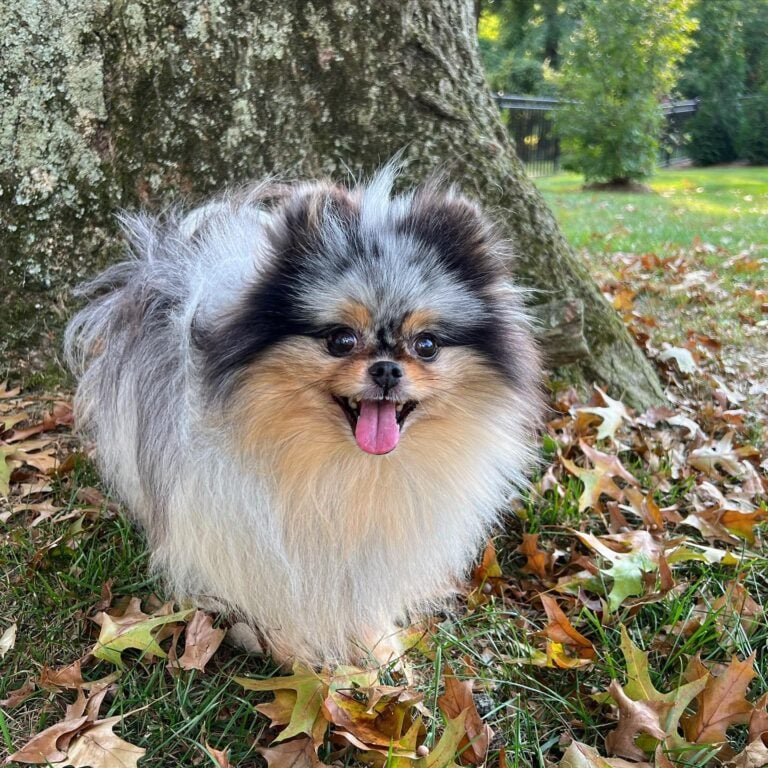
Penny Lane is an adorable blue merle parti Pomeranian! Some parti Poms have white markings, but this is a tan parti merle where the secondary solid color is tan instead of white.
4. Kumo

Kumo is a two-year-old blue merle Pomeranian living in Singapore where he begrudgingly leaves his soft beds to go on walks, just as long as there are treats involved!
5. Nugget
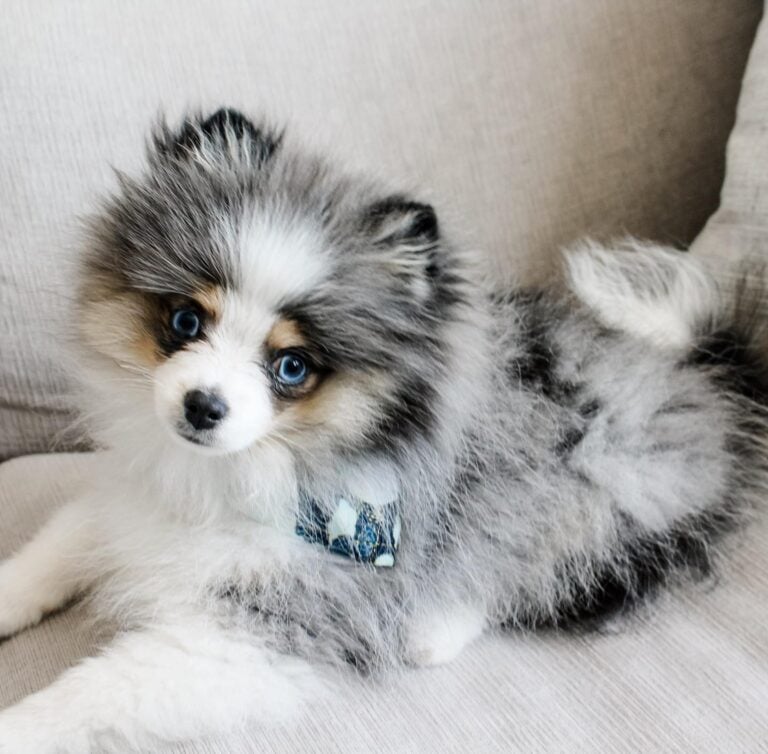
Little Nugget is a three-year-old blue merle parti Pomeranian with two blue eyes thanks to the merle gene. Have you ever seen a more appropriately named dog? Nugget really is…a nugget!
Merling Gene Controversy Explained
The gene responsible for producing a merle coat in dogs is a semi-dominant gene that a pup only needs to inherit one copy of to be merle. Dogs inherit copies of their genes from each of their parents, so only one parent needs to be a carrier of the merling gene to produce a merle puppy. A single merling gene on its own doesn’t cause health issues and simply affects coat and eye coloring, producing the beautiful mottled coloring that gives merle dogs their signature look.
So, why would merle breeding be controversial?
If a puppy inherits two copies of the semi-dominant merle gene, they run the risk of being born with serious congenital health complications. Luckily, ethical breeders can easily prevent merle-to-merle breeding with proper genetic testing. However, some people believe that including the merling gene at all is unethical due to the risk of double merling.
Double Merle Dog Health Issues
A double merle dog is a dog who has inherited two merling genes. This occurs when irresponsible breeders either neglect to do proper genetic testing or purposefully breed merle to merle in naive hopes of increasing their chances of producing merle puppies. Double merle dogs are often born completely white and may suffer from partial or total vision and hearing loss.
Hearing issues in double-merle dogs are caused by the loss of pigment to the hair in the inner ear, but otherwise, their ears form normally. Unfortunately, some double-merle dogs are not only vision impaired or blind but do not have fully formed eyes which may even need to be surgically removed.
Blue Merle Pomeranian Basic Info

Merle describes a solid base color dappled with splotches of darker colors in the same color family—for example, blue merle is patches of black on a gray base coat color. Blue merle is the only merle color allowed or accepted by the American Kennel Club, but other merle colors do exist. A sought-after color variation for the Pomeranian, blue merle is so sought after that dog lovers will happily shell out $4,000+ for a blue merle Pomeranian puppy.
But, other than being beautiful, what are blue merle Pomeranians like? Does their personality match their adorable fluffy outside? Do they make good family dogs? Are Pomeranians easy to train? Let’s dive in!
Blue Merle Pomeranian Temperament
Pomeranians are cheerful, confident, curious, playful little dogs with big personalities that often dominate in groups of other dogs, and prefer leading the pack to following. Brave and bold, Pomeranians may be watchful and protective of their families but are also incredibly affectionate and social.
Sometimes feisty, Pomeranians are quick to correct other dogs and are typically more human-oriented than dog-oriented—in other words, they would rather spend time with you than play at the dog park. With their humans, Pomeranians can be bossy, and will strictly enforce household rules and schedules. Some can also be opinionated and picky, and many Pomeranian owners complain that their dogs will refuse to eat certain foods.
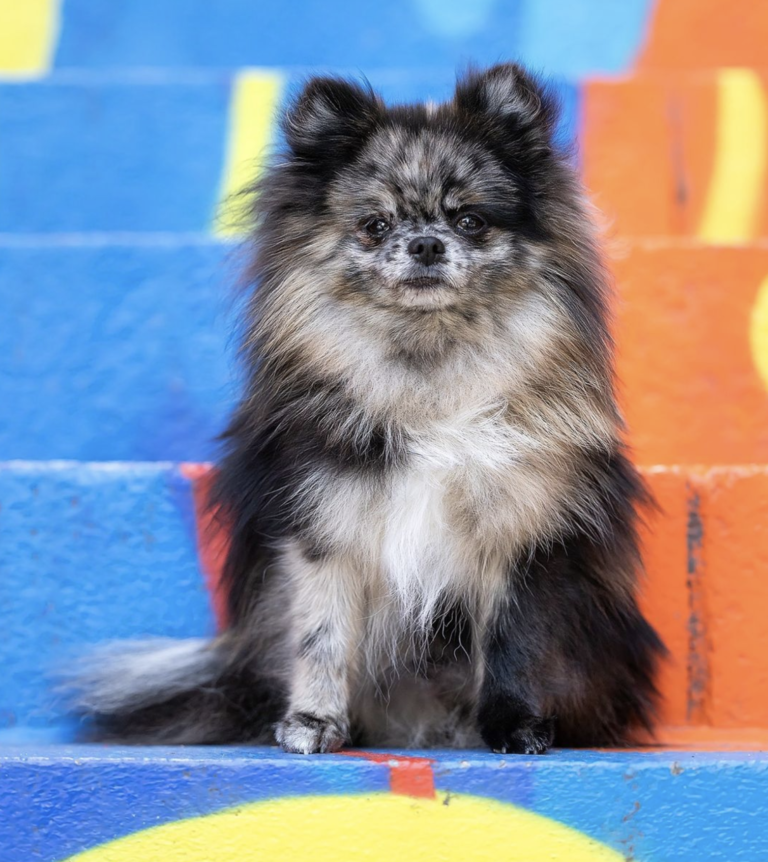
“I’ve had 2 Poms and both were/are busybodies—definitely will bark at every noise. Both were lapdogs, very much glued to me and a “one-owner” type of dog. Both are grazers, too, so I leave food out all day. I love Poms because they are very intelligent, can be stubborn, and they ‘talk’ by growling. They’re so expressive and unlike any [other dog] breed.”
Reddit user’s comment
Intelligent and active, Pomeranians need moderate levels of exercise but can become restless and “naughty” if not given enough mental stimulation. Many Pomeranians love to bark, and their owners need to find outlets for this excitement. In some cases, Poms may pretend not to hear their owners, or wilfully ignore commands—this makes Poms hard to train in comparison to other breeds.
Though some may love children, Pomeranians are not recommended for families with small children.
Blue Merle Pomeranian Size
The Pomeranian is a toy breed like the Chihuahua and the Maltese, and well-bred examples are often quite small. A full-grown blue merle Pomeranian stands at only 6–7 inches tall at the shoulders and weighs around 3–7 pounds.
Blue Merle Pomeranian Health
The only health condition related to coat color that could appear in your blue merle Pomeranian if it is responsibly bred is color dilution alopecia. This condition causes hair thinning, skin irritation, and flakiness, but it is not life-threatening and is caused by the dilute gene responsible for blue, not the merle gene. Pomeranians, regardless of color, are also prone to a similar condition called alopecia X, which also causes hair loss and skin irritation, so hair loss is something to keep an eye on if you own a blue merle Pom.
Some other health issues to be aware of if you own a Pomeranian include:
- Joint issues (e.g. luxating patellas, Legg-Calve-Perthes disease)
- Eye and vision issues (e.g. cataracts)
- Tracheal collapse
- Hypoglycemia
- Hypothyroidism
- Cushing’s syndrome
- Epilepsy and seizures
- Congestive heart failure
Where To Find a Blue Merle Pomeranian for Sale
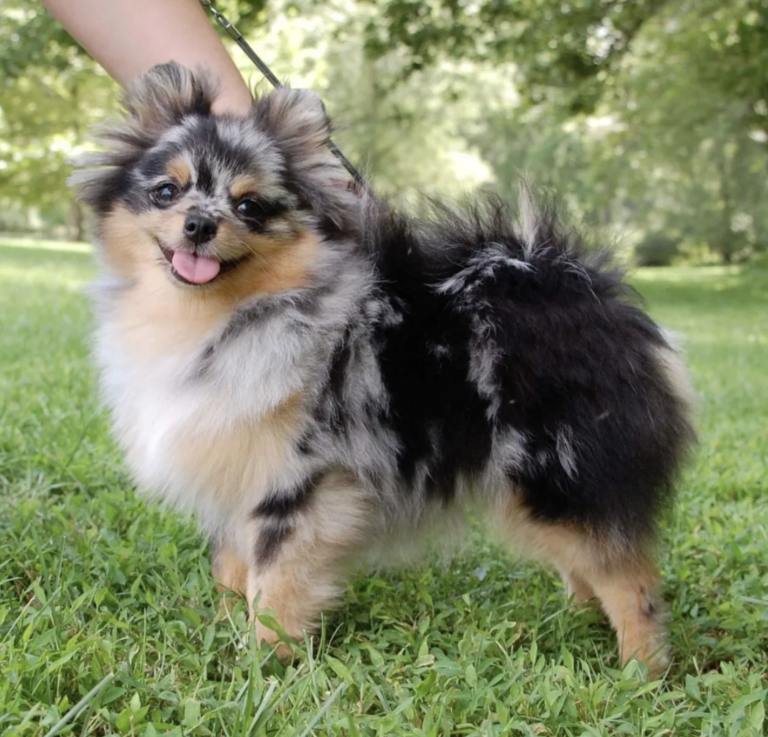
Before settling on a puppy, it’s very important to find someone who breeds merle Pomeranians ethically. Ethical breeders conduct extensive genetic testing before settling on mating pairs and always have the welfare of their dogs in mind. Likewise, ethical and responsible breeders screen the people purchasing their dogs, and would never sell to pet stores, or approve a buyer without a full interview process.
To find reputable Pomeranian breeders, check out the American Kennel Club’s breeder marketplace and the American Pomeranian Club’s list of breeders registered with the club.
Did you know you can also adopt Pomeranians? Check your local rescues to see if any Poms in your area need a home, or work with a breed-specific rescue to give an adoptable Pom a new forever family.
Blue Merle Pomeranian FAQ
Don’t scroll just yet — we’re answering more of the internet’s burning questions about the blue merle Pomeranian.
How long do blue merle Pomeranians live?
The average lifespan for a Pomeranian is 12–16 years.
Do Pomeranians shed?
Yes. Pomeranians are moderate shedders that blow their coats twice a year. To keep your Pomeranian looking and feeling their best, daily brushing is highly recommended in addition to regular trips to the groomer.
Are chocolate merle Pomeranians AKC approved?

No. The American Kennel Club does not recognize chocolate merle as an official color, but there are still Pomeranian breeders producing healthy chocolate merles for pet owners who aren’t interested in bringing their pups to dog shows. Here are two examples of what a chocolate merle Pom looks like.
Sources: @ChiloTheChocolateMerlePo and @PomMonty
What causes blue fur in Pomeranians?

Blue fur is caused by a dilution gene that lightens red (brown) or black pigment. When the gene is used to dilute black, the pigment lightens to a steely blue-gray color which the dog world just calls “blue.” The dilute black gene affects not only fur, but skin pigment too, and blue Pomeranians will also have a blue nose and paw pads.
Take a quick look at a side-by-side comparison of a solid-black Pomeranian (left) and a solid-blue Pomeranian (right) to get a better idea of how the dilution gene works. Be sure to look at the difference in the color of their noses!
Sources: @cae_m._.kong and @WolfyAndPablo
Related Articles:
- Top Picks: The Best Dog Food for Pomeranians
- Are Pomeranians Hypoallergenic, Or Should Allergy Sufferers Avoid This Adorable & Extra-Fluffy Breed?
- Pomeranian Alopecia: What To Do If your Pom Is Losing Hair


